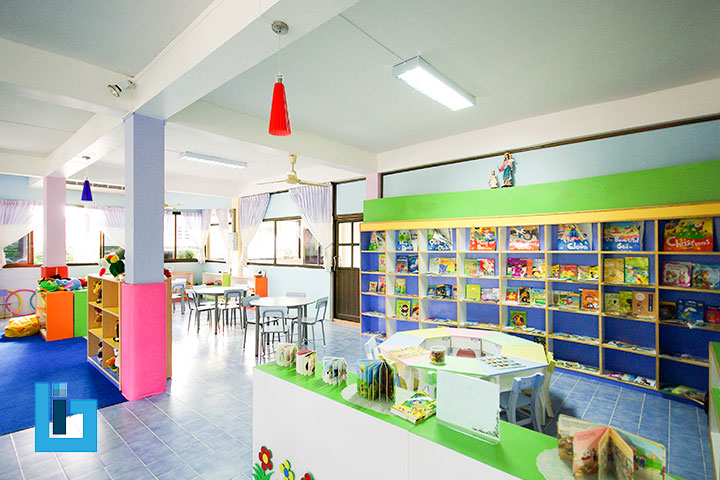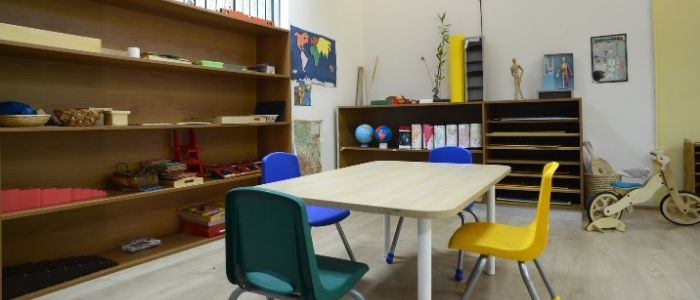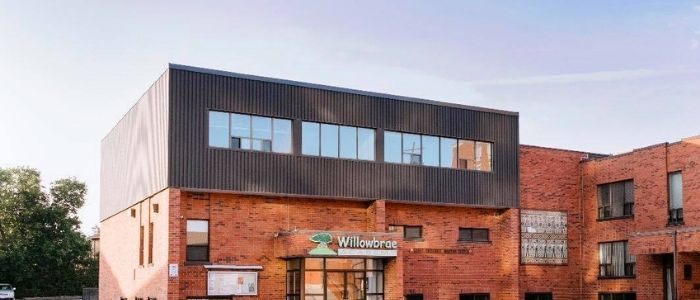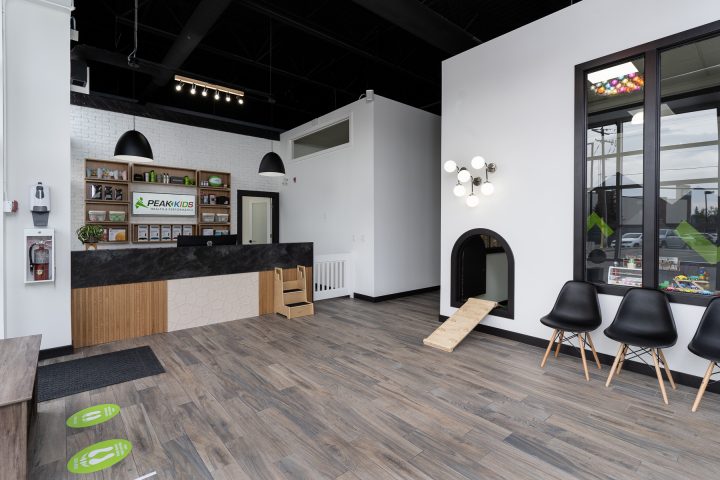Constructing a daycare center in Canada involves creating a nurturing space for children and managing a substantial financial investment. This guide will provide a clear roadmap by exploring the diverse factors that influence daycare center construction costs across the nation while spotlighting the least and most expensive cities for this endeavor.
Table of content:
- 1. Factors that influence daycare center construction costs
- 2. Cost Variations
- 3. Budgeting for Daycare Center Construction
- 4. Daycare center Start-Up Cost
- 5. Financing Land and New Construction
- 6. Finding the Right Location for Daycare Center Construction
- 7. Build a Daycare Center: Design and Center Floor Plan
- 8. Find a Building Construction Contractor

1. Factors that influence daycare center construction costs
Zeroing In on the Optimal Location
The geographic location of your daycare center is a pivotal factor in cost considerations. Construction costs can vary significantly depending on your chosen province, city, and neighborhood. Urban areas tend to command higher costs due to elevated land prices, increased labor expenses, and stringent building codes. On the other hand, rural settings often present more budget-friendly options.
Scaling and Scoping the Project
The size and scope of your daycare center play a pivotal role in shaping your budget. More extensive facilities inherently require more materials, labor, and resources. A well-designed center with spacious playrooms, innovative educational spaces, and ample outdoor areas is undoubtedly appealing, but aligning your vision with your financial means is crucial.
Crafting Design and Features
From understated simplicity to elaborate sophistication, the design of your daycare center significantly affects costs. Elements such as architectural style, layout intricacies, and innovative features—such as energy-efficient systems and specialized play zones—all contribute to expenses. Striking a balance between these design aspirations and your budget is key.
Material Selection
Choosing construction materials, finishes, and fixtures represents a crossroads of cost and quality. Opting for premium and durable materials may increase initial costs, but the long-term benefits of reduced maintenance and repairs can be substantial. Finding the sweet spot between aesthetics, durability, and budget is essential.
Navigating Regulations and Permits
Understanding and adhering to regulations is integral to daycare center construction. Different Canadian provinces and municipalities have varying building codes and permitting procedures. Allocating funds for permits, inspections, and regulatory compliance within your budget is crucial. Early engagement with local authorities can help anticipate these expenses.
Labor and Wage Dynamics
Labor expenses form a significant portion of your budget. Wage variations, labor availability, and potential union stipulations contribute to costs. Researching local labor rates and collaborating with reputable contractors familiar with daycare center construction will help you make informed decisions.
Infrastructure and Site Preparations
The condition of your construction site has financial implications. Extensive site groundwork can elevate costs, such as land clearance, grading, and utility installations. Pre-evaluating the site’s existing infrastructure and necessary enhancements during the planning phase is essential.
Additional Costs and Contingencies
Beyond the core construction expenses, auxiliary costs should be accounted for. Architectural and engineering fees, legal consultations, insurance premiums, and contingency funds set aside for unforeseen circumstances must all be factored into your financial planning. These provisions safeguard your project against unexpected challenges.
2. Cost Variations
Daycare center construction costs in Canada typically range from $150 to $450 per square foot. However, this general estimate can vary based on location and other factors. For instance, the least expensive city for daycare construction might be Winnipeg, known for its relatively lower construction costs. Conversely, Vancouver’s most expensive city is renowned for its high living costs, likely extending to construction expenses.
Starting a daycare center could be an incredibly rewarding experience – both financially and in terms of positive social impact. Hard working parents from urban to rural areas need to be sure their kids are in safe, happy hands, so they can concentrate on providing for the family. The good news for you? As finding the right one is so important, good daycare centers are nearly always in demand.
Additionally, you’re doing good work for your local community, providing kids with a space to learn and grow, parents with a hassle-reducing option – and the potential for businesses nearby to benefit. Not to mention your return on investment within reach.
So you’re ready to consider the daycare center construction costs? Excitement aside, starting a new business can be an overwhelming experience. Especially when a child’s safety is placed in your hands. The other piece of good news – there are grants available for startup funds just like this one. In this article we will explore three key areas: budget, finding the right location and daycare design.

Budgeting for Daycare Center Construction
Once the wheels are in motion, naturally, writing up a budget of your daycare center construction costs is your first plan of action. This should include the number of rooms and areas you’re thinking of considering, as well as materials you want to use. Being knowledgeable in the general commercial construction process will give you a head start. Always have 10-15% above on the budget plan, to ensure you’re able to make changes (change orders) during construction.
Your building size, conditions and chosen construction ingredients will be clear indicators of your overall project cost. You should gather as much information as you can about your design ideas early on, and have a fluent understanding of long-term maintenance costs as well as your thoughts around future business planning.
Most importantly: Don’t let a tight budget get in the way of creating an inspiring space for kids. Make a list of everything you want to include in your daycare design, and divide between what is a ‘need’ and what is a ‘want’.
Once your plan is put forward, your architect and advisor should be able to give you a rough idea of the cost of your project. You’ll know if you’re heading in the right direction. With the right contactors, you’ll be able to talk about your project and plans with a sense of ease and enthusiasm.
Daycare center Start-Up Cost
Investments up front which could save you or earn you more money in the long-run are undoubtedly worth consideration. You might want to make certain adjustments to your structures, elements or orderly systems to be more thoughtful of a better return on investment. For example, high-quality insulated roofing and walls might seem more expensive now, but you’ll be thankful later when the kids are protected, and you’re not spending out more money on excess electrical heating systems.
Financing Land and New Construction
If you don’t have the coins up front to finance the land and new construction yourself – like most people – a construction loan is a way to buy the land, much like a short term real estate loan. You’ll receive ‘advancements’ for each phase of your project, and you’ll only pay interest on what you borrow, rather than a lump sum. This is also where government grants become interesting and useful. Get in touch with your local authorities, non-profit organisations and community centers to understand what could be possible for you in your local area.
Finding the Right Location for Daycare Center Construction
Arguably the most important decision you’ll make in this process. Though quality daycare centers are desirable in every suburb, you’ll need to factor in a few key points. Firstly, there has to be an uneven ratio of kids to already available daycare centers in the area. A genuine local need for childcare in the community is essential.
Do Your Research
Ask friends and their friends and their friends of friends. Word-of-mouth is a good starting point of investigation. Try real estates, investigate nearby schools and take a closer look at some of the nearby businesses. Are there coffee shops for mums to hang out at nearby? Will there be enough parking space for six seaters?

Safe, Quiet, Easy Access
Daycare centers should be in sight and easy to spot. This will save you money on marketing in the long-run. Ideally, you’ll want parents to be able to walk past it on a regular basis and effortlessly drop in. If it’s close to necessities such as supermarkets, you’ll save your customers on transition time. Although, naturally, you’ll also want to position your daycare center away from traffic and loud street noises. Providing enough outside space and room to play.
Natural Lighting
Make sure you choose an area which will get a lot of natural light. Air ventilation is also important. Kids are sensitive to their environment, and these kinds of details are crucial. If you choose an area sandwiched between dark, looming nearby buildings or trees which blockout most of the sunlight, the kids (and parents) won’t feel enticed to come to your daycare center. We’ll get on to more aesthetics later.
Outdoor Space
There should be space for kids to run around outside and get some fresh air. You might want to consider incorporating a play space into your plan, if you haven’t done so already. There are so many exciting options for slides and colourful layouts to make your daycare center really appealing.
Build a Daycare Center: Design and Center Floor Plan
to, you’ve made it this far. Well luckily, the daycare center design and floor plan are the fun part. It’s good to have a solid understanding of design build construction before you begin. In this instance, we’ll be incorporating basic knowledge of construction technique with the essential needs of kids and their caregivers.
Legal aspects will also need to be considered to ensure you have a successful design for years to come. Visit your region’s daycare licensing agency to determine any build requirements, such as number of kids per square feet, special parking and fire exits. Learn as much as you can about your area’s requirements and permits before you begin. Here are some architectural design essentials to get you thinking:

Comfort
A delicate balance of being neither dull nor overstimulating. Think warm lighting, sounds, a mix of hard and soft surfaces. Sheltered from bad weather, with a pleasant view of nature intertwined.
Safety/Movement/Space
Kids need freedom to move without too many obstacles in their way. Padded floor, like cushioned carpet is also essential for a toddler’s development. To fall over, wobble and get used to their limbs without damage risks.
Inspires Productivity
Set your kids up for success. You want to inspire growth, development and productivity. For example, lights which come on automatically will save kids getting stuck in the dark. Smaller bathrooms with reachable faucets. Cosy areas for shy kids to retreat to when they need it. You get the picture.
Routine and predictability
Keep floor plans similar, so your kids will be able to maneuver themselves around the area with ease. Predictability will help them feel at home, and more able to concentrate on learning.

Find a Daycare Centre Construction Contractor
So now you need help choosing your construction contractor. Choose one who can understand and manage your priorities. You’ll need to trust the people you are working with to also be fully prolific in the necessary legislations and regulations of the childcare industry. The development process might seem overwhelming at first, but not when you’re in safe hands. Opt for established & credible construction contractors who care about your project and can keep the ball rolling as steadily and efficiently as possible. Finally, find a building construction contractor who can manage your daycare center construction costs to effectively develop into a long lasting return on investment.
In Conclusion
Building a daycare center in Canada necessitates meticulous planning, thorough research, and a well-defined financial strategy. Keep in mind that the variables discussed—location, size, design, materials, regulations, labor, site preparation, and contingencies—all intersect to shape your budget. To ensure a successful journey, collaborate with experienced professionals, including architects, contractors, and legal advisors. Their expertise, combined with a deep understanding of your project’s intricacies, will empower you to create a daycare center that adheres to safety standards and regulatory guidelines while fostering a nurturing environment for children.
